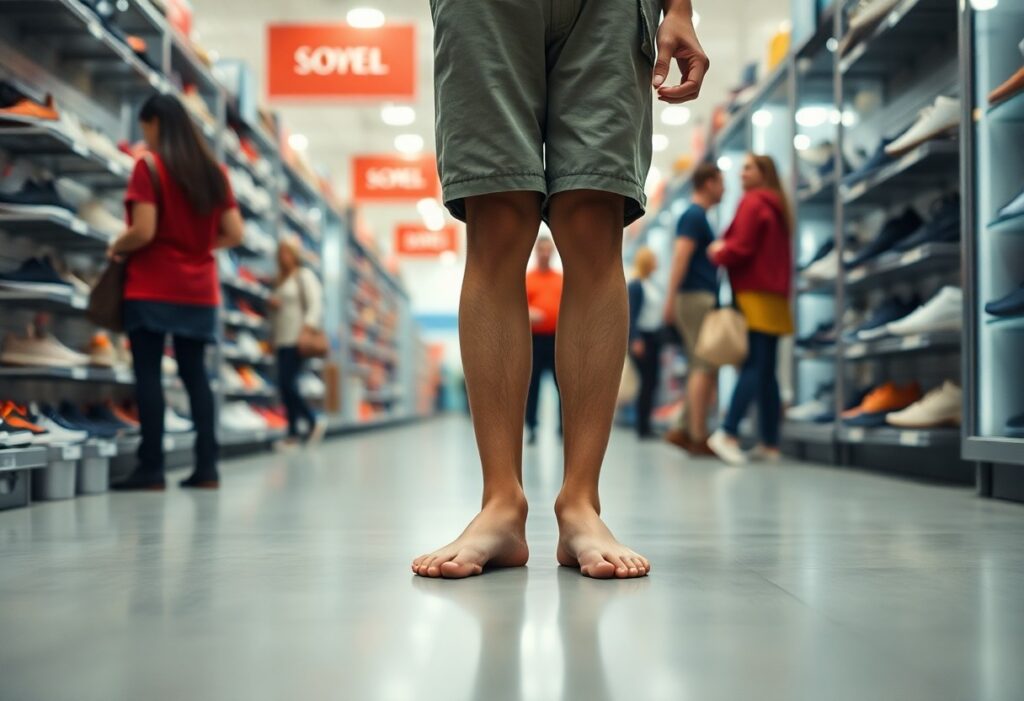
Over the course of a demanding retail shift, your feet endure significant stress, making shoe selection critical. If you’re tired of aching feet and uncomfortable footwear, barefoot shoes might be the revolutionary solution you’ve been searching for. These minimalistic shoes offer a unique approach to workplace comfort, providing natural foot movement and support that traditional shoes can’t match. By allowing your feet to function as they were naturally designed, you can experience improved comfort, reduced fatigue, and potentially prevent long-term foot health issues during those long hours on the sales floor.
Going Minimal in Retail
To understand the challenges retail workers face with footwear, we must first recognize the unique demands of standing and moving for extended periods. Your feet endure constant pressure, movement, and strain during long shifts, making shoe selection critical for comfort and health.
Current Footwear Challenges
An average retail worker spends 8-10 hours daily on hard surfaces, experiencing significant foot fatigue and potential long-term musculoskeletal issues. Traditional shoes often fail to provide the necessary support and comfort needed for such demanding work environments.
The Cost of Traditional Shoes
Workers typically spend $100-$200 on conventional work shoes that deteriorate quickly and fail to address fundamental foot health. These shoes often require frequent replacement, creating a continuous financial burden.
The Hidden Expenses of Conventional Footwear
But the true cost extends beyond monetary expenses. Poorly designed shoes can lead to chronic pain, potential foot deformities, and reduced workplace productivity. Medical treatments for foot-related issues can accumulate significant expenses over time, making barefoot shoes a potentially more economical long-term solution.
The Barefoot Revolution
Clearly, the barefoot shoe movement represents a paradigm shift in footwear design for retail workers. By challenging traditional shoe manufacturing, these innovative shoes offer a revolutionary approach to foot health and comfort. You’ll discover a new way of understanding how shoes can support your natural movement and overall well-being during long retail shifts.
Natural Movement Principles
Between the traditional shoe design and barefoot shoes lies a fundamental difference in philosophy. Your feet are designed to move naturally, and barefoot shoes aim to restore this innate movement pattern. By allowing your toes to spread and your foot to flex, these shoes help you reconnect with your body’s biomechanical intelligence.
Zero-Drop Technology
Across the footwear landscape, zero-drop technology stands out as a game-changing innovation. This design ensures your heel and forefoot are at the same level, promoting a more natural stance and reducing unnecessary strain on your joints during long retail shifts.
It is important to understand that zero-drop technology fundamentally changes how you distribute weight. By eliminating the artificial heel elevation found in traditional shoes, you engage more muscle groups, improve posture, and potentially reduce the risk of repetitive strain injuries common in retail work. The uniform sole height encourages a more balanced and aligned walking pattern, which can lead to improved comfort and reduced fatigue during extended periods of standing and walking.
Anatomy of a Better Shoe
It revolutionizes your understanding of footwear by challenging traditional design principles. Barefoot shoes are engineered to mimic your foot’s natural shape and movement, providing you with a shoe that works with your body’s biomechanics instead of against them. By prioritizing natural foot mechanics, these shoes offer you a fundamentally different approach to comfort and performance in your retail work environment.
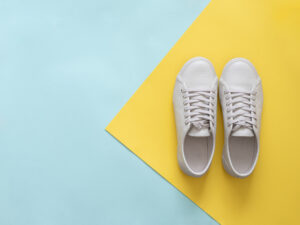
Essential Features
Anatomy of barefoot shoes centers on key design elements that prioritize your foot’s natural functionality. Wide toe boxes allow your toes to spread naturally, while zero-drop soles maintain a flat profile that supports your body’s alignment. You’ll find these shoes are incredibly lightweight, flexible, and designed to let your feet move and strengthen themselves, providing you with a more authentic walking experience.
Protection vs. Sensation
The balance between protecting your feet and maintaining sensory feedback is critical in barefoot shoe design. Minimalist soles provide just enough barrier between you and the ground to prevent injury while allowing you to feel surface textures and terrain. This unique approach ensures you get maximum foot protection without sacrificing the natural sensory experience of walking.
Consequently, the protection versus sensation debate in barefoot shoes reveals a nuanced approach to foot health. By offering a thin, flexible sole, these shoes enable you to maintain proprioceptive awareness – your body’s ability to sense its position and movement. This means you’ll have enhanced balance, improved posture, and a more natural walking pattern, which can be especially beneficial during long retail shifts.
Making the Switch
For retail workers considering barefoot shoes, the transition is more than just changing footwear. You’ll be fundamentally reimagining how your feet interact with the ground. This journey involves understanding your body’s natural movement patterns and allowing your feet to rediscover their innate strength and flexibility. By choosing barefoot shoes, you’re taking a proactive step towards improved foot health and overall body alignment.
Transition Period
The initial weeks of switching to barefoot shoes require patience and gradual adaptation. Your feet will experience a new range of motion and muscle engagement that traditional shoes have suppressed. You might feel mild discomfort as your foot muscles strengthen and realign, which is a normal part of the transition process. It’s recommended to start with shorter wearing periods and progressively increase duration.
Adaptation Timeline
Against conventional shoe wisdom, barefoot shoes demand a strategic approach to adaptation. Most retail workers will need 4-8 weeks to fully adjust to the minimalist shoe design. During this period, you’ll experience gradual changes in foot mechanics, muscle strength, and overall comfort.
Period of adaptation varies based on individual foot health and previous shoe-wearing habits. Consistent wear and mindful progression are key to successful transition. Some users report significant improvements in foot strength and reduced workplace fatigue within the first month. Your body will progressively develop stronger foot muscles, better proprioception, and more natural movement patterns, ultimately enhancing your comfort during long retail shifts.
Performance Benefits
Once again, barefoot shoes prove to be more than just footwear for retail workers. These minimalistic shoes offer superior performance benefits that traditional shoes simply cannot match. By allowing your feet to move naturally, you’ll experience enhanced mobility, improved sensory feedback, and reduced fatigue during long retail shifts. The lightweight design and flexible sole enable you to move more efficiently, potentially increasing your overall workplace productivity.
Energy Conservation
Energy expenditure dramatically changes when you switch to barefoot shoes. Your muscles work more efficiently with these minimalistic shoes, reducing the unnecessary strain caused by heavy, restrictive footwear. By promoting a more natural walking pattern, you’ll conserve energy throughout your retail shift, allowing you to feel less tired and more capable of handling demanding work environments.
Posture Improvement
An alignment revolution begins with barefoot shoes. These shoes encourage a more natural stance by eliminating heel elevation and providing a zero-drop design. This promotes better body mechanics, helping you maintain a more upright and balanced posture during long retail shifts.
Hence, the posture benefits of barefoot shoes extend far beyond immediate comfort. By allowing your feet to move naturally, these shoes help realign your entire kinetic chain, from your feet through your ankles, knees, hips, and spine. This natural alignment can reduce long-term musculoskeletal stress, potentially preventing chronic pain and improving overall body mechanics for retail workers who spend hours on their feet.
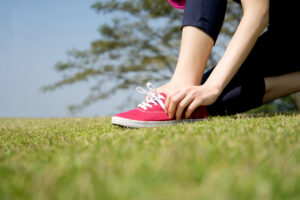
Professional Considerations
Your professional environment demands footwear that balances comfort, performance, and appearance. Barefoot shoes offer a unique solution for retail workers, providing exceptional comfort while maintaining a professional look. These shoes support your natural foot mechanics, potentially reducing fatigue and improving overall work performance. By choosing barefoot shoes, you invest in both your foot health and professional presentation.
Workplace Requirements
Requirements for retail footwear typically include slip resistance, durability, and comfort. Barefoot shoes meet these criteria by offering flexible soles with excellent grip, lightweight construction, and ergonomic design. They allow you to move efficiently during long shifts while protecting your feet from potential workplace hazards.
Style and Presentation
Considerations for retail workers include maintaining a polished, professional appearance. Barefoot shoes now come in diverse styles that blend seamlessly with workplace dress codes, ensuring you look professional while experiencing unparalleled foot comfort.
Plus, modern barefoot shoe designs have evolved significantly. Contemporary models offer sleek, professional aesthetics that match traditional work footwear while providing superior comfort and foot health benefits. Many brands now produce minimalist shoes in classic colors and styles, making them indistinguishable from conventional professional footwear.
To wrap up
The journey to comfortable, healthy feet in retail begins with understanding your footwear choices. Barefoot shoes offer you a revolutionary approach to workplace comfort, providing natural movement, strengthening your feet, and reducing strain. You’ll experience lightweight design, zero-drop alignment, and a wider toe box that supports your body’s natural mechanics. By choosing barefoot shoes, you invest in your foot health, mobility, and overall well-being, transforming your workday experience from painful to pleasurable. Your feet will thank you for making this smart, informed decision.


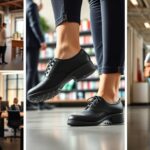

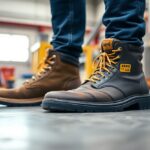



It’s fascinating to dive into the nuances of footwear, especially concerning those of us who navigate the bustling environment of retail. I’ve found that the significance of choosing the right shoes often goes overlooked by many—not just consumers, but employers too. Retail workers are the backbone of the service industry, yet they are frequently left to suffer in traditional shoes that might prioritize aesthetics over comfort.
I really appreciate your deep dive into the importance of footwear for retail workers. As someone who has spent several years working in various retail environments, I can attest to the challenges that come with standing for long hours on hard surfaces. Choosing the right shoes was always a painful journey for me, both literally and figuratively.
It sounds like you’ve been through quite the journey with your footwear choices in retail. Standing for hours can really take a toll, can’t it? I can relate to that struggle. When I was researching this topic, I found that many workers often prioritize style over comfort, only to regret it later during those long shifts.
It’s great to connect with someone who truly understands the challenges of being on your feet all day in retail. I can relate to the painful journey of finding the right shoes. I remember trying on countless pairs, hoping to find something that would provide both support and comfort—it’s like a mini quest every time you need new ones.
It’s interesting to see such a focus on footwear in retail, as I’ve often felt the toll of long shifts on my feet. I tried barefoot shoes a couple of years ago, and I was surprised by how much more aligned my natural movement felt. It’s like my feet were finally able to breathe, and I noticed a real reduction in fatigue by the end of my shifts.
Your insights into the challenges retail workers face with footwear are spot on. It’s surprising how often the importance of proper shoe selection is overlooked, especially given how much time we spend on our feet. I’ve worked retail for years, and I can personally attest to the toll that traditional shoes can take on your feet, back, and overall well-being.
You bring up a crucial point that doesn’t get enough airtime. When you work in retail, you’re not just on your feet a few hours a day—it’s a whole shift, often standing or walking for hours on end, sometimes on unforgiving floors. The impact of poorly chosen footwear can extend far beyond temporary discomfort; it can really alter your quality of life, affecting not just your feet, but your back, posture, and even your mood. It’s one of those things that can seem minor at first, but the cumulative effects are anything but small.
You’re so right—it’s easy to overlook the toll that retail work can take on our bodies until we’re deep into a shift and feeling every minute of it. I remember my own experience working in a store where the floors were hard as concrete. By the end of an eight-hour shift, my feet would feel like they’d taken a beating, and my back would be aching too. It’s really interesting how something like footwear can have such a ripple effect on our overall well-being.
You hit the nail on the head. There’s something poetic about the subtle torture of those brutal retail floors, isn’t there? I remember my own stint in retail; it was like joining a secret society where the initiation involved a serious case of foot fatigue and an unspoken agreement to perfect the art of grimacing while smiling at customers. Those hard, cold floors really do turn your feet into battlegrounds.
You hit the nail on the head about the physical toll of retail work. It’s surprising how something like standing on hard floors for hours can really wear us down. I also had a job where I was on my feet for the whole shift, and I can relate to that feeling of your body just aching by the end of the day. I found that investing in good footwear made a noticeable difference, but it’s a bit wild how many people overlook that aspect until they’re in the thick of it.
I really appreciate the insights you’ve shared about the importance of footwear in retail. As someone who has spent long hours on my feet in various service roles, I can definitely relate to the struggle of finding comfortable shoes. I’ve recently started wearing barefoot shoes myself, and it’s been a game changer. The way they allow for natural foot movement really does make a noticeable difference in comfort and energy levels by the end of the day.
I can totally relate to the struggle of finding the right shoes for long retail shifts. For years, I’ve tried everything from cushioned sneakers to those rigid work shoes that promise support but often end up doing my feet more harm than good. When I first heard about barefoot shoes, I was skeptical, but like you pointed out, they allow for a more natural foot movement, which really piqued my interest.
I can really understand where you’re coming from. Finding the right shoes for those long retail shifts can feel like a never-ending quest. I went through a similar journey with footwear. I’ve tried so many options that promised comfort but often left me wishing I’d just stayed barefoot.
You make a great point about the importance of shoe selection for retail workers! I’ve had my share of long shifts, and I can definitely relate to the struggle of finding comfortable footwear. I remember a time when I thought cushioned soles were the answer, but they just didn’t provide the support my feet needed for those 8+ hour days. I’ve recently started exploring barefoot shoes, and it’s been a game-changer.
I really resonate with this discussion about footwear for retail workers, as I’ve felt the struggle firsthand during my shifts. It’s surprising how much of a difference shoe choice can make in our overall comfort and wellbeing. I recently switched to barefoot shoes after experiencing chronic foot pain from wearing traditional work shoes, and I’ve noticed a significant shift in how my feet feel at the end of the day.